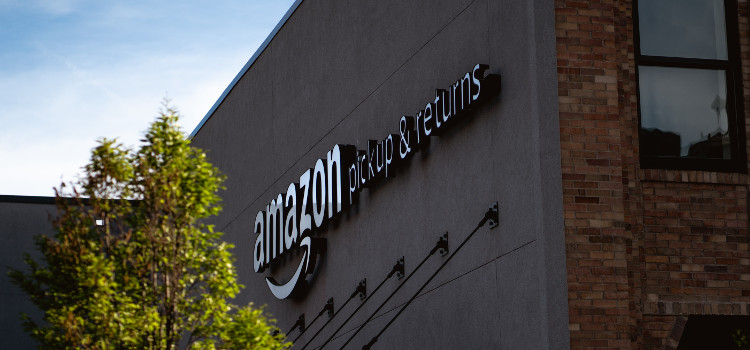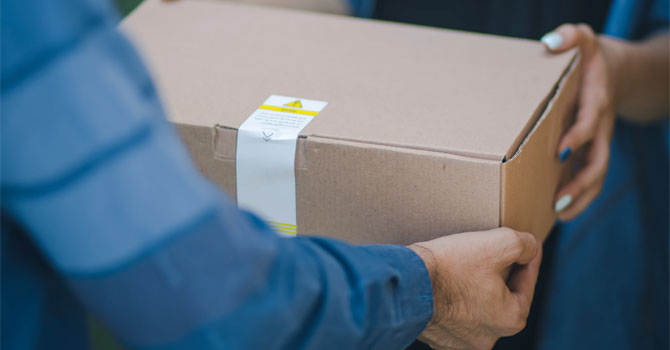We’ve often heard how one man’s trash is another man’s treasure.
- Inbox Dollars - Get paid to check your email. $5 bonus just for signing up!
- Survey Junkie - The #1 survey site that doesn't suck. Short surveys, high payouts, simply the best.
- Nielsen - Download their app and get paid $50!
But in the case of Amazon returns, one man’s returned goods is another man’s inventory.
Buying Amazon pallets and then selling them doesn’t sound like a solid business plan, but other people have earned thousands of dollars from doing this.
However, just because others have profited doesn’t guarantee that you will, too. The key is knowing everything you can about the process: where to buy the pallets, how you can find good products for flipping, and maximize your profits.
In today’s blog post, we’ll look at how buying Amazon returns and flipping them can be a profitable exercise.
How Do Amazon Returns Work?
Amazon is the world’s largest online retailer, and one of the reasons they’re the biggest in the world is they do their best to make it easy for their customers to buy from their website.
One of the ways they do this is through their return policy.
Amazon’s return policy is a lenient one. For most items, Amazon allows customers to return orders within 30 days of receiving it, whether it was a damaged or defective item or for whatever reason.
The thing is, even though many of these products get returned unopened, and presumably, in the same condition as when they were shipped out, Amazon sellers can’t sell these unopened products back on sale as brand-new.
So what happens to all those returns that Amazon readily accepts?
Some of the returned items end up on Amazon Warehouse, where they’re sold at a discount.
The items that end up in Amazon Warehouse are usually those with packages that have been opened, even damaged, and the products have been used but still in good condition.
Amazon liquidates the rest of that returned inventory to small business buyers through their own online US-based liquidation marketplace as well as a European liquidation marketplace.
Business buyers go to these sites and look for liquidation lots of returns and overstock inventory in various sizes and parts.
These lots may have been casually sorted by product category. For instance, home décor, kitchen equipment, apparel. But this isn’t very strict. A liquidation lot marked as containing “home décor” may very well contain random pieces of clothing, toys, or beauty products.
In addition, these lots are sold via auction, much like eBay. That is, buyers can name their price and the highest bidder wins the lot.
Because Amazon only sells these liquidation pallets to businesses, individuals like you Instead, you’re going to purchase from what’s known as a third-party wholesaler or liquidator.
They buy the liquidation lots from Amazon in bulk and then they sell it to smaller businesses and individuals for a profit.
Pros And Cons of Flipping Amazon Returns
Advantages
- Much lower cost per item than buying retail or even wholesale
- Can attract more buyers by selling items at competitive prices
- Can select certain pallets containing certain categories of products
Disadvantages
- Requires research to find the right liquidator
- Quality of items in a pallet is hit-or-miss
- May end up more expensive with the freight costs
Where To Buy Amazon Returns
Here are some reputable places where you can purchase Amazon return pallets.
1. Liquidation.com | Amazon Liquidations
Liquidation.com is probably the largest liquidation company on the internet, working with over 11,000 retailers aside from Amazon.
Similar to eBay, they auction off the pallets based on a starting bid.
They source their Amazon pallets from customer returns from Amazon, as well as through Amazon Liquidations. Not all of the pallets they offer have photos displayed, especially those from Amazon Liquidations from fulfillment centers, which are usually sealed.
No joke. Here are the fastest ways to make easy money online. Click here to see how.
Liquidation.com provides a list of the contents of each opened pallet, like those from customer returns. The retail prices are also indicated on the list.
They give you the location of the warehouse they’re shipping out from, but they don’t allow you to pick them up physically. You can opt to let them handle the shipping or find your own shipping service.
2. Direct Liquidation | Amazon Liquidations
Direct Liquidation offers plenty of Amazon pallets, and they also work with other big retailers, such as Walmart, Target, Lowes, and other retailers.
Again, similar to eBay, there’s no fixed price for a pallet. There’s a starting bid based on a percentage of the estimated retail price of all the contents of the pallet and you get to compete with other bidders to get the pallet.
Direct Liquidation also shows photos of the pallet to give you an idea of the condition of the contents, plus it gives you a list of what’s inside plus the estimated retail value.
They indicate the warehouse location, too, so you’d know if it’s driving distance from you, or at least you can estimate how much the freight would cost if you have a pallet sent to you.
3. BULQ
BULQ is another reputable liquidation company that offers pallets at a fixed price. They even have a measurement for what a pallet is: 48”x40”x42”. They also sell smaller units called cases, which measure 24”x20”x23”.
BULQ works with many different retailers, but the website doesn’t have a specific section featuring pallets that they sourced from Amazon, so you’ll have to search for “Amazon” on the search box to see those pallets.
The prices for the pallets are fixed. The shipping fee per pallet is fixed as well at $200, no matter where the pallets are shipped from.
The pallets are organized by category, and the contents of each box are examined for quality, which they list down on the pallet description.
BULQ indicates the quality of the items in the pallet prominently on the pallet page, as well as a detailed list of the items inside plus the retail price of each item. They even guarantee a 98% and up accuracy for this list, or they refund the difference in price.
4. TDW Closeouts
TDW Closeouts offers pallets from various department stores and online retailers, but of the other companies here, they’re the most secretive.
They offer the pallets online, but you can’t order from the website. You have to call them and inquire about what pallets they have available, how much they are, and how to get it shipped to you, wherever you are in the world.
It looks like it’s geared more toward medium to big businesses, not only in the US but worldwide. They’ll ship to various countries.
But if you’re from Florida, specifically in the Fort Lauderdale area, you’re in luck: you can visit their 35,000-square feet warehouse and buy from them directly. They’ll give you better prices as well if you buy direct.
Things To Consider When Buying Amazon Return Pallets
Making money from flipping Amazon return pallets is a relatively new trend, so here are a few tidbits of advice to help you make as much money as you can.
1. Buy only one or two pallets initially from a liquidator.
You’ll want to get an initial, first-hand grasp of what a particular liquidator’s pallets are like.
Not to say that all liquidators aren’t trustworthy, but buying a liquidation lot is already a big risk, and you don’t want to add more risk by going in blind.
2. Manage your expectations of the condition of the items.
The items in the box won’t all be brand-new, in the original packaging.
You can make money from home and it doesn't have to be challenging. Click here to see how.
The packaging, if there’s even any of the original packaging present, will be damaged, at the very least. The conditions of the items range from slightly used to almost worn out.
Buying liquidation lots is a numbers game. When buying a lot, you’re essentially betting that at least a few of the items are still in sellable condition.
Don’t get discouraged if you’re halfway through your pallet and it’s all trash. In his business, it’s typical to throw away a third to half of everything.
3. Electronics involve a larger investment.
When you buy an electronics lot, be aware that you’re signing up for a huge time investment.
First, you have to test each and every one of them if they’re working. Once you’ve sorted out the working ones and the non-working ones, you’ll have to check if there’s a market for broken units of these electronics.
If you do manage to find a market for these broken units, then at least you can sell them off. Otherwise, you’d then have to find a market for its parts.
It’s a lot of time to invest in items that you don’t even know if people will buy.
4. Understand freight costs.
Pallets may weigh hundreds of pounds, depending on the merchandise involved, meaning it might cost you a few times more to ship the pallet than the cost of the pallet of returned goods.
Focus your search on companies within driving distance to minimize your costs.
5. Sell your inventory as fast as you can.
When you sell an item, it may seem like the logical pricing strategy is to get as much profit as you can for it, so you tend to price it higher.
But when you’re dealing with pallets of Amazon returns, it makes more sense to sell more of your inventory, even if it’s for a lower price than you wanted than squeezing every dollar you can out of a single item.
This strategy makes sense when you’re dealing with plenty of inventory. The more units you can sell, the more profit you earn from all the units sold.
6. Invest only what you can afford to lose.
The most important thing to remember is that buying Amazon returns is NOT a guaranteed way to make money.
And because there’s a high risk, I would absolutely not recommend investing all your life savings in this endeavor.
The Bottom Line: Is Buying Amazon Returns Worth It?
Buying Amazon returns is an interesting side cash opportunity that will only grow as online retail grows.
If you find the right places to buy Amazon return pallets and if you buy the right pallet, you have a great chance of being successful.
Other Resources
Here are some other ways to make money with Amazon.
Or if you want to start a profitable business from home, here are some of the possibilities.
Have you ever bought a pallet of Amazon returns, or returns from any other retailers? Share your experiences in the comments section below!






